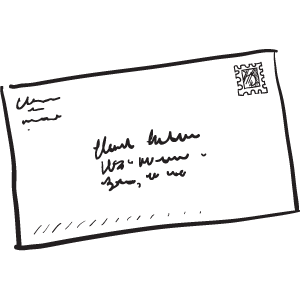Hazy IPAs. Cider. Sake. They’re all drinks you think of when you think of Vermont, right?
Or not. With a sly dig at that reversal of expectations, Vermont Sake’s labels inform consumers that while a local take on Japan’s traditional rice wine might not be top of mind, it does exist.
In the spring, Vermont Sake officially became the state’s first and only licensed sake brewery. Andrew Baker and Diana Hill bottled their inaugural batch of #7 Junmai — produced from rice, koji, yeast and Addison County well water — in March. In August, they started vending at the Bristol and Shelburne farmers markets, introducing the biz to Vermonters with bottles and samples.
Baker and Hill are used to carving out niches in the beverage industry. In 2021, the couple started Vermont’s first certified bird-friendly coffee company, Ridge Vermont Craft Roasters. Now the converted garage beside their Monkton home is half coffee roastery, half sake brewery.
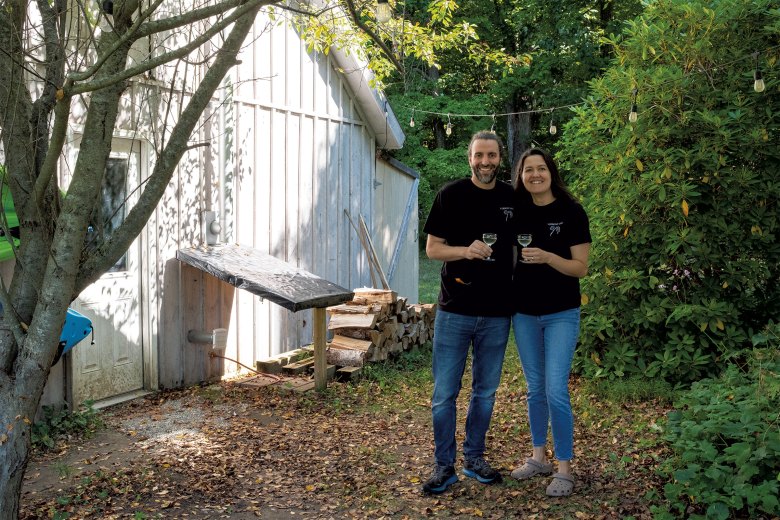
Even as craft producers go, Vermont Sake is tiny. The whole garage is just over 500 square feet, and the sake operation loses a corner to a treadmill. But with a couple of stainless-steel tanks, a temperature-controlled koji tent and custom-built gadgets throughout, the pair is adding something unique to the world of Vermont-made booze.
Baker and Hill, both 36, traveled to Japan when they were eighth graders at Rutland Middle School. The long-running Rutland Ishidoriya Student Exchange brought them across the world for two weeks, and they hosted students from Japan in return.
“We didn’t fall in love with sake then,” Hill said with a laugh. But over the years, the couple — who started dating early in high school — expanded their appreciation for Japanese culture to its more than 2,000-year-old signature booze.
“Now we’ve tried them all,” Hill said, noting that it’s been easier to find sake in Vermont over the past year or two.
Craft sake started making waves in the U.S. in the mid-2010s. In 2024, the Sake Brewers Association of North America reported 27 producers across the continent.
The local market’s growth reflects the popularity of Japanese food in the U.S.; casual izakaya spots and Michelin-starred omakase restaurants are all the rage in big cities. But it also results from slumping domestic consumption in Japan, where the number of sake breweries is roughly a third of what it was at its 1970s peak, Forbes reported last year.
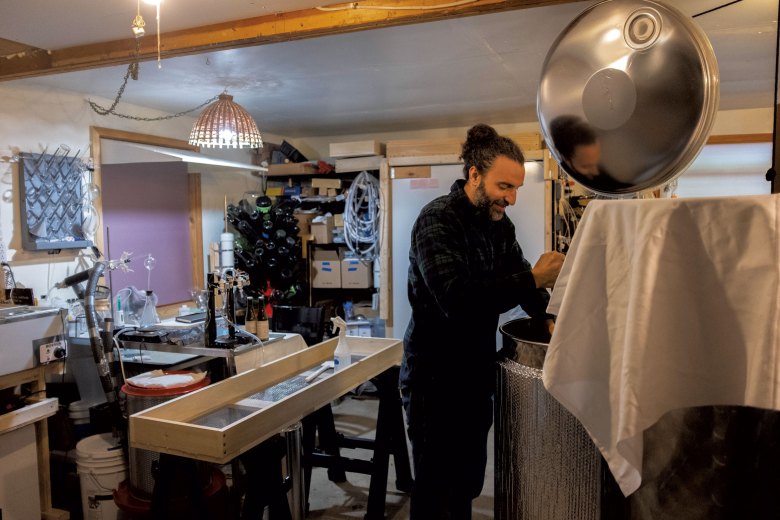
Eventually, Baker’s interest in the drink turned into learning all he could about its manufacture from books, documentaries and podcasts. Three years ago, he brewed his first batch.
“If I like something, I want to do it myself,” he said.
While it’s frequently called “rice wine,” sake is technically brewed, making it closer to beer, process-wise. Baker was already familiar with that style of fermentation, having dabbled in homebrewing over the years. For sake specifics, he visited Farthest Star Sake in Medfield, Mass., the only other sake company in New England, to learn the ropes.
During the brewing process, enzymes must convert starch into sugar before yeast can break it down into alcohol and carbon dioxide. For beer, that happens via grain malting. Sake starts with rice that’s already been milled down, so it needs a slightly different helping hand.
Enter koji, a mold formally known as Aspergillus oryzae. Besides being sake’s “magic ingredient,” Baker said, it’s used to ferment soybeans for soy sauce and miso.
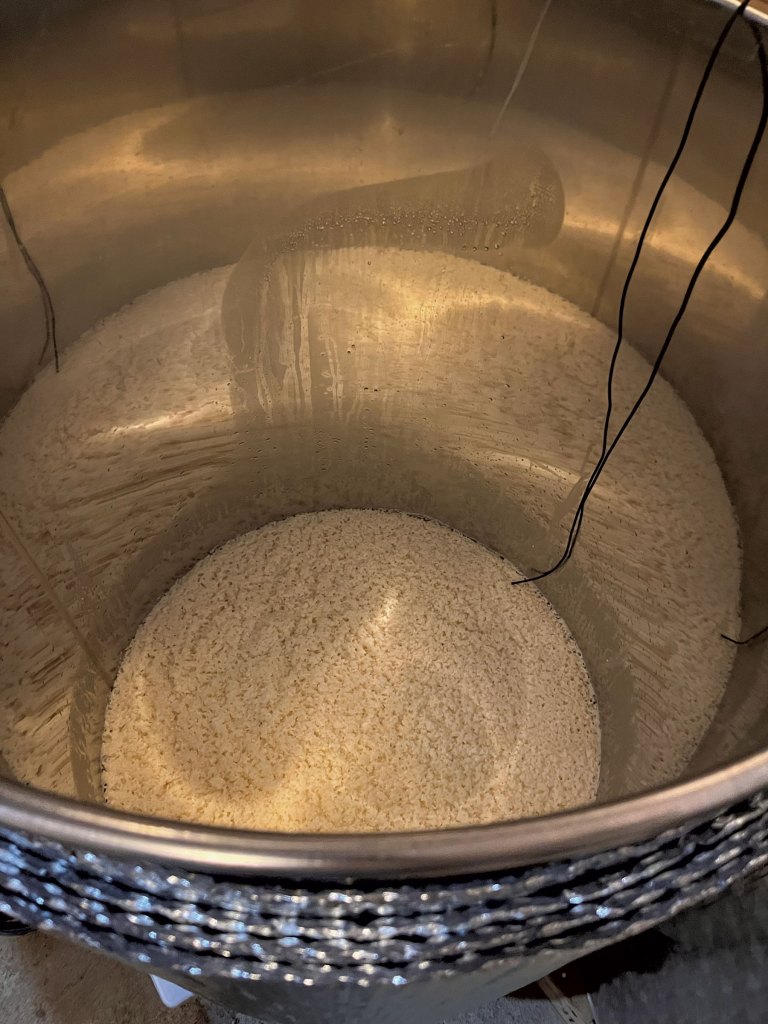
Baker spreads steamed rice on trays and inoculates it with the koji, sourced directly from Japan. Then the trays go into a temperature-controlled tent at 104 degrees for 48 hours. He mixes the contents every couple of hours, even through the night. As the koji develops, the rice transforms from starchy to sweet and chestnut-flavored, he said.
Baker adds the mixture to brewing tanks, along with freshly steamed rice, water and yeast. He lets the yeast work for two days before second and third additions on subsequent days. The whole brew takes about a month.
Baker does the rice steaming outside using a 15-gallon brew kettle to steam 20 pounds at a time over a propane burner — unless it’s too cold or mosquito-y, in which case he’ll head to the porch.
The aroma is intoxicating, Hill said. The local wildlife seems to agree: A bear showed up when Baker steamed the very first batch.
While rice can be grown in Vermont, Baker has turned to Isbell Farms in Arkansas, the state where more than half the rice in the U.S. is produced. The multigenerational family farm specializes in sake-specific varieties such as Yamada Nishiki, Omachi and Gohyakumangoku.
The rice Baker uses is 70-percent milled, meaning that 30 percent of the grain was removed during milling, taking away the outer layer of fat and protein and leaving pure starch. So far, he’s worked with Yamada Nishiki and Titan, a medium-grain American variety.
Compared with bold wines and hoppy IPAs, sake is a subtle beverage.
At the end of the 30-day brew, Baker clarifies the slurry-like mixture — called doburoku — with a vacuum filter and distills a small sample to determine the alcohol content. Legally, it can’t be above 16 percent, so the final product might require dilution. He then presses the whole batch to remove the grains of rice and bottles the resulting sake.
All of Vermont Sake’s products are pasteurized at least once after bottling — most before bottling, too. Pasteurization stabilizes the sake’s delicate flavors and gives it a yearslong shelf life; an opened, recapped bottle will stay good for weeks in the fridge.
Compared with bold wines and hoppy IPAs, sake is a subtle beverage. Vermont Sake’s tasting notes entice drinkers to look for “banana, spice and happiness” in a batch of #7 Junmai — named for the “understated” #7 sake yeast strain Baker used and the style, junmai, with its four simple ingredients. A batch of #9 Junmai — brewed with Yamada Nishiki and Titan rice and #9 sake yeast — has “more exciting fruity aromas” and “notes of honey dew and whimsical joy.”
“I’m not really trying to target traditional tastes,” Baker said. “If it tastes good, it’s like, All right, that’s batch #4.”
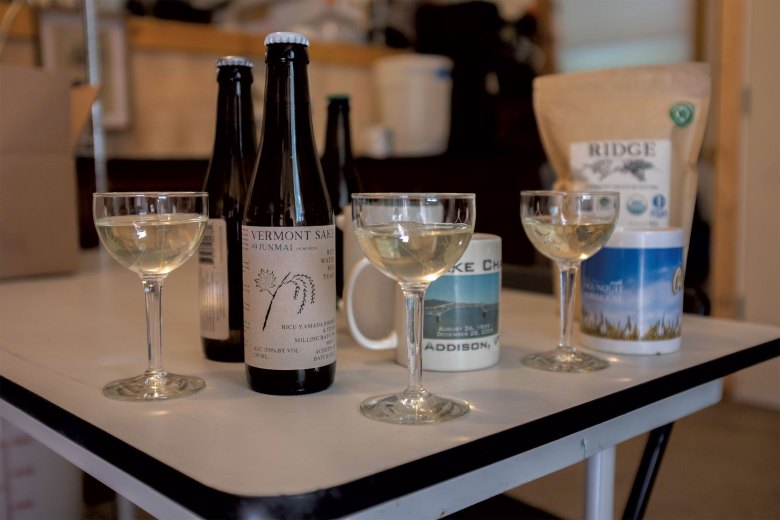
Between Hill’s focus on the coffee business, Baker’s full-time engineering job and the couple’s 3-year-old son, Vermont Sake is “a night gig, weekend gig, wee morning gig,” Hill said. “But it’s so fun to work together.”
They’ve also got a wine project in the works, if the raccoons ever leave their home vineyard’s 11 varieties of cold-hardy hybrid grapes alone long enough for a significant harvest.
“The idea is to make wine when we have grapes, make sake when we don’t,” Baker said.
Whether sake is more like wine or beer is an issue the couple often have to address, Baker said — even during the brewery’s licensing process. Sake is taxed like a beer, but its labeling is regulated like a wine, and the State of Vermont views it as the latter.
For now, Vermont Sake is self-distributed. Baker and Hill had their first tasting appointments at local shops and bars last week, and they plan to continue vending at farmers markets. They sell the 330-milliliter bottles for $15 each or $56 for a four-pack.
They’ve had repeat customers already and plenty of questions about the sake-making process, which Baker answers with a delightfully nerdy enthusiasm.
At the Shelburne Farmers Market in late August, he talked about milling rates, pasteurization and titratable acidity while pouring tastes of Vermont Sake’s first four releases, recommending pairings with Japanese food, pasta or pizza. The sake is served cold, but he may rig up a warming station for cold-weather market sips, he said.
When curious customers wandered up to the booth, Baker asked, “Are you a sake drinker?”
“Not really, but I’d like to be,” one replied.
“You can water the grass with it if you don’t like it,” Baker said, handing over a tiny plastic cup of #7 Junmai.
The grass didn’t stand a chance.
Learn more and find an up-to-date list of where to purchase at vermontsake.com
The original print version of this article was headlined “The Rice Time | Vermont Sake launches the state’s first sake brewery in Monkton”

